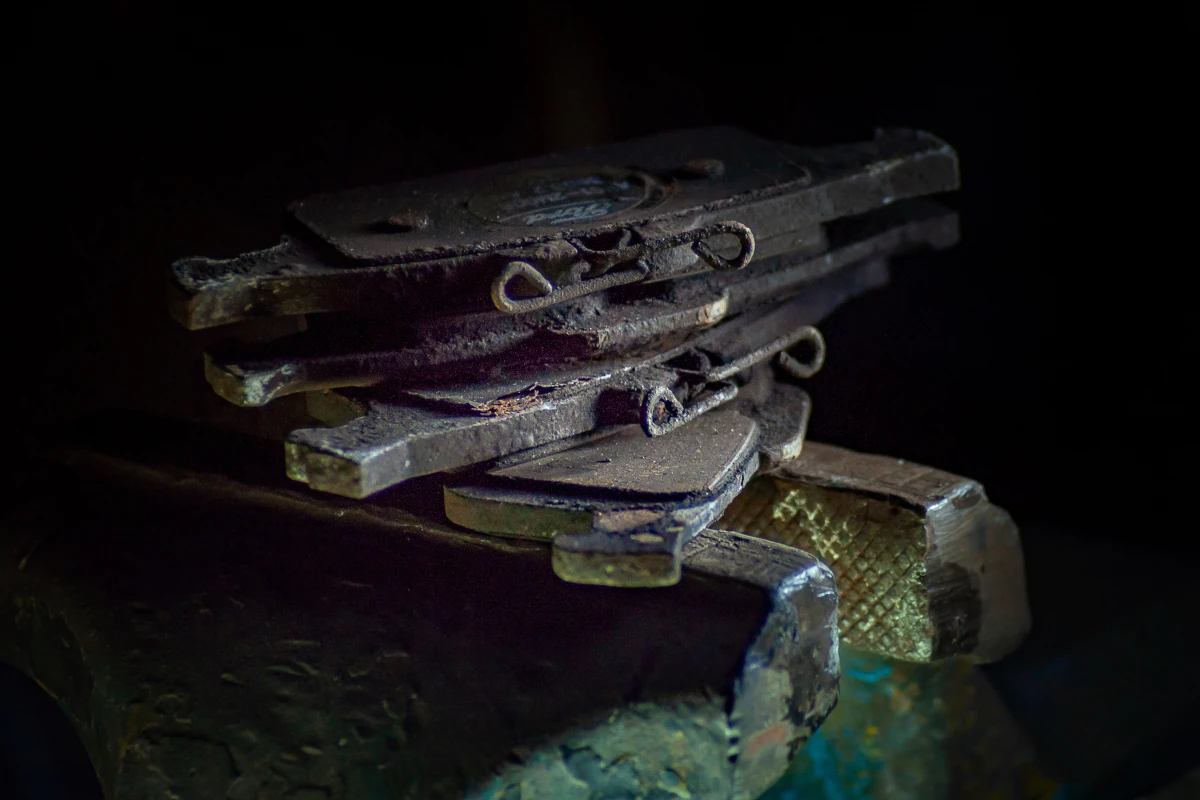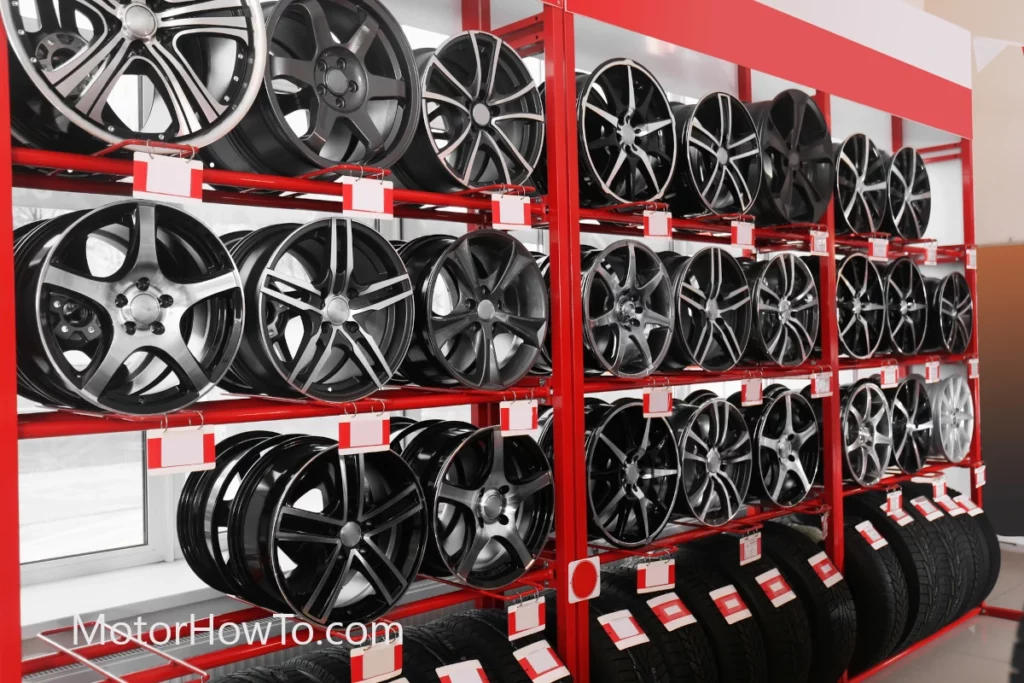Your brake pads are very important to your car because these are some of the components that stop the wheels from moving whenever you step on your brake pedals.
And because of the friction that brake pads experience during brakes, they need to be resistant to heat so that they will not end up in flames.
In that regard, do ceramic brake pads contain asbestos, which is a flame retardant material?
Here’s what ceramic brake pads contain
Ceramic brake pads do not contain asbestos. That is because a law passed during the 90s effectively stopped the sale, importation, and manufacturing of asbestos brake products by 1997. The only possibility of ceramic brake pads having asbestos is if you bought them in the black market.

Because asbestos was discovered to be a potent carcinogen that can cause different types of health complications and problems other than cancer, lawmakers effectively banned them in brakes because of how much asbestos can be released in the air due to friction.
As such, unless you bought your brake pads from an unknown source from the black market, the chances of your ceramic brake pads containing asbestos should be close to zero.
Do modern brake pads have asbestos?
There was a point in time when asbestos was considered one of the best materials you can use to make all sorts of different things, such as brake pads.
The reason was that asbestos is very durable and can handle friction without burning up due to how asbestos is actually flame-retardant.
Now, it is important to make sure that you use a material that is resistant to flames whenever you are talking about brake pads. That is because brake pads function by essentially stopping the rotors on the wheels from moving, thereby causing a ton of friction. Friction, as you already know, can easily create fire because it produces heat. So, by using asbestos on brake pads, the chances of these brake pads catching fire were close to zero.
As such, there was a time when asbestos was primarily used for the brake pads of different vehicles such as:
- Aircraft brakes, including military and civilian airplanes
- Railroad locomotives and freight cars
- Ship drivelines, propeller, and anchor systems
- Heavy equipment like dozers, excavators, and rock trucks
- Cranes and hoist devices
However, the one thing that you need to know regarding asbestos is that it is a very potent carcinogen.
When released into the air, it can easily cause plenty of different health hazards and problems such as cancer, especially when the person is exposed to potent levels of asbestos for an extended period of time. And when brake pads create friction during regular use, the friction would be more than enough to release asbestos in the air.
Normally, asbestos materials that have been installed properly and are inert can be considered safe and stable. But that cannot be something you can say about asbestos in brakes because of how easy the asbestos can be disturbed when it crumbles or wears out due to regular use and to the friction that is created when a car is braking.
So, in a sense, because of friction, asbestos brake pads can wear out steadily little by little and will release tiny particles of asbestos as fine dust in the air. This can easily get trapped in several things such as brake housings and even any other surrounding object within the vicinity of the vehicle.
Knowing the dangers of asbestos, car manufacturers and those that manufacture the different parts that go into these cars no longer use asbestos when it comes to their brake pads. So, if you have a newer car that was made sometime probably after the 2010s, the likelihood of your brake pads containing asbestos is slim.
Meanwhile, if you go for after-market asbestos brake pads, there is also a slim chance that the brake pads contain asbestos as long as you got your brake pads from a reputable seller and not just from the black market or from some old car.
Do ceramic brake pads contain asbestos?
In response to how some manufacturers were turning away from brake pads that contain asbestos, one of the brake pads that became prominent is the ceramic brake pad.
As the name suggests, ceramic brake pads are made from materials that are similar to the ceramic used in plates.
These brake pads tend to be denser and very durable while having copper fibers that make them more resistant to friction.
Ceramic brake pads became popular during the 90s up to now because of the following characteristics:
- They are quiet and do not make extra sounds when braking.
- Ceramic brake pads do not produce a ton of dust due to wear and tear. And this is something that is quite common in older asbestos brake pads, which release asbestos particles in the air due to wear and tear.
- They have a higher temperature range compared to other types of brake pads.
- They are not made with asbestos.
As mentioned, ceramic brake pads do not contain asbestos because these pads are primarily made using ceramic and some copper fibers.
In fact, some car manufacturers actually turned to ceramic brake pads as the alternatives that they can use to develop vehicles that do not have asbestos in the brake pads.
How can you tell if brake pads are asbestos?
Even though more and more manufacturers no longer have brake pads that contain asbestos, there are still some pieces of evidence that can point to the possibility that there are still cars with brake pads that contain asbestos because of how asbestos particles are still found in repair shops all over the country.
So, how can you tell if your brake pads have asbestos?
The truth of the matter is that there is no clear way to tell if your brake pads have asbestos just by looking at them. Probably the only way for you to be sure is to have the brake pads inspected in terms of their material composition, and that can take time and effort.
However, it is easier to tell whether or not your brake pads have no asbestos because certain car manufacturers, auto parts retailers, and packaging information in the newer vehicles will tell you whether or not your car has asbestos.
Meanwhile, this is something that you cannot expect in older vehicles, which most likely have brake pads that have asbestos. That is why, to be sure, you might want to have your brake pads replaced with modern ones if you are driving an older car that was probably manufactured before the 2010s or even during the 90s.
For mechanics, it is best to assume that all brakes have asbestos in the brake pads because of how this is the safest way to be sure that mechanics are safe.
Mechanics are usually the ones that are most at risk of asbestos. That is why procedures against asbestos exposure should be practiced among mechanics all the time.
Is asbestos banned in brake pads?
Western countries such as the US have long outlawed asbestos in brake pads and other brake components. During the 90s, there was a federal law that stated that asbestos brake products should no longer be manufactured, sold, or imported into the United States. The full effects of the law were supposed to be felt after 1997 when car manufacturers were finally asked to stop using asbestos brake products.
However, there is no clear assurance that brake pads are no longer using asbestos. While the law might be in effect, there might still be some cars out there that are using asbestos for their brake pads, especially when such cars were not made to be sold in the US.
Of course, if you are getting your brake pads from the black market, there is also a likelihood that they contain asbestos. This is quite common in regions such as Asia, where asbestos mining is at its biggest. As such, you should be wary when it comes to buying cheaper brake pads that come from an unknown source because there is a good chance that they contain asbestos.
Sources
Freedoniagroup.com: Asbestos in brake pads what the average consumer might not realize



